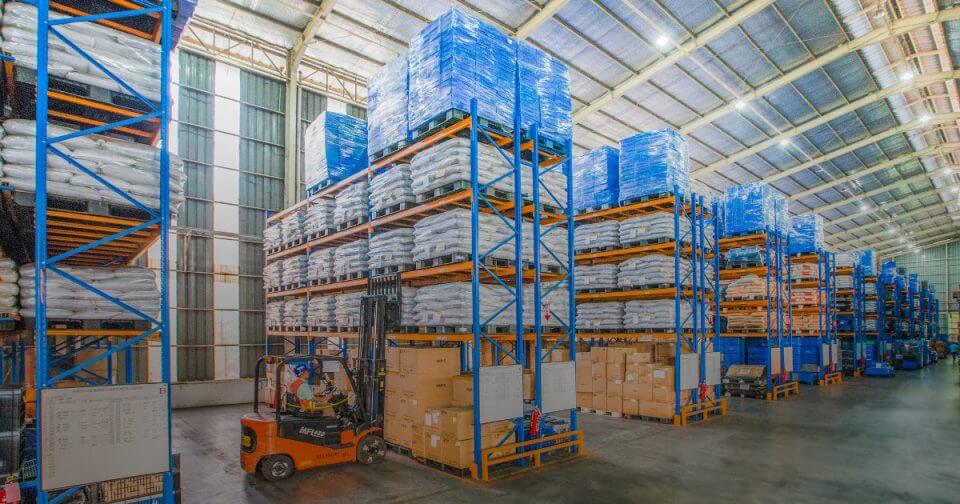
How Vendor Managed Inventory (VMI) Strengthens Supply Chain Resilience and Collaboration
To optimize inventory management, retailers and suppliers are increasingly turning to Vendor Managed Inventory (VMI) tools that transfer the responsibility…
Generix Ushers in a New Era of Intelligent Commerce for Retailers with AI-Driven Innovation Read the press release

A 3PL Warehouse Management System (WMS) is a software application specifically designed to help third-party logistics providers manage their warehouse operations. These systems offer features like real-time inventory tracking, automated order processing, and advanced reporting capabilities. By leveraging a 3PL WMS, logistics companies can optimize storage space, reduce errors, and improve overall productivity.
One of the primary benefits of 3PL WMS systems is the automation of routine tasks such as order picking, packing, and labeling. This automation minimizes human errors, ensuring that orders are processed accurately and efficiently. For instance, barcode scanning and RFID technology can track inventory movements precisely, reducing the risk of stockouts and overstock situations.
3PL WMS systems provide real-time visibility into inventory levels, locations, and movements. This capability allows businesses to maintain accurate inventory records, optimize storage space, and stay ahead of replenishment needs. Advanced features like batch and serial number tracking help in managing perishable goods and ensuring compliance with industry regulations.
A key advantage of 3PL WMS software is its scalability. As your business grows, the WMS can adapt to increased volumes and more complex operations without significant additional investments. This flexibility is crucial for handling seasonal fluctuations, expanding to new markets, or incorporating new clients into your logistics network.
Access to real-time data and advanced analytics tools is another significant benefit of 3PL WMS systems. These tools provide insights into key performance indicators such as order accuracy, on-time delivery, and inventory turnover. By analyzing this data, businesses can identify areas for improvement, optimize workflows, and make >Effective inventory management is crucial for any 3PL operation. A 3PL WMS provides comprehensive tools for real-time tracking of inventory levels, locations, and movements. Key features include:
3PL WMS systems are designed to integrate seamlessly with other business systems such as ERP (Enterprise Resource Planning), TMS (Transportation Management Systems), and e-commerce platforms. This integration ensures smooth data flow between different systems, reducing manual data entry and the potential for errors. A well-integrated WMS can provide a unified view of operations, improving coordination and efficiency across departments.

Effective inventory management is crucial for any 3PL operation. A 3PL WMS provides comprehensive tools for real-time tracking of inventory levels, locations, and movements. Key features include:
A robust 3PL WMS streamlines the order management process, ensuring that orders are processed efficiently and accurately. Features include:
Data-driven decision-making is a cornerstone of efficient 3PL operations. Advanced reporting and analytics features of a WMS include:
A 3PL WMS needs to seamlessly integrate with other business systems to provide a unified operational view. Key integration features include:
As 3PL businesses grow, their WMS needs to scale and adapt to changing requirements. Features supporting scalability and customizability include:
Successfully implementing a 3PL WMS involves several key steps:
Start by identifying the specific areas in your current warehouse processes that need improvement. This could include inventory management inefficiencies, order processing delays, or lack of real-time visibility. Conduct a thorough analysis to determine what features and capabilities you need in a WMS.
Select a 3PL WMS that meets your business requirements and offers the necessary features. Look for systems that are scalable, integrate well with your existing software, and offer the specific functionalities you need. Consider factors like cost, vendor reputation, and user reviews in your decision-making process.
Work with the vendor to customize the system according to your unique workflows and client needs. This may involve configuring automated processes, setting up user roles and permissions, and integrating the WMS with other business systems. Customization ensures that the WMS aligns perfectly with your operational requirements.
Proper training is crucial for the successful adoption of the new system. Ensure that all staff members are trained on how to use the WMS effectively. This includes understanding how to navigate the interface, perform routine tasks, and utilize advanced features. Ongoing training and support should also be provided to address any issues and ensure continuous improvement.
After implementation, regularly assess the system’s performance and make necessary adjustments to optimize operations. Monitor key performance indicators (KPIs) to evaluate the impact of the WMS on your warehouse processes. Use the data and insights provided by the system to identify areas for further improvement and ensure that the WMS continues to meet your evolving business needs.
By following these steps, 3PL providers can successfully implement a WMS that enhances operational efficiency, improves accuracy, and supports business growth.

To optimize inventory management, retailers and suppliers are increasingly turning to Vendor Managed Inventory (VMI) tools that transfer the responsibility…

In an ever-evolving logistics environment, agile and precise warehouse resource management is essential to remain competitive. With increasing volumes driven…

France’s electronic invoicing reform relies on a Y-architecture, where Partner Dematerialization Providers (PDPs) play a central role in issuing and…

Work with our team to build your ideal supply chain software stack and tailor it to your unique business needs.